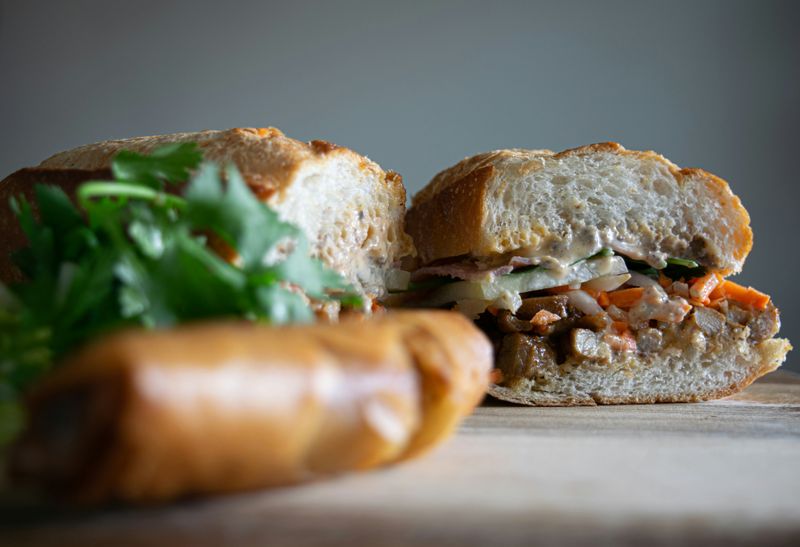
This logo isn't an ad or affiliate link. It's an organization that shares in our mission, and empowered the authors to share their insights in Byte form.
Rumie vets Bytes for compliance with our
Standards.
The organization is responsible for the completeness and reliability of the content.
Learn more
about how Rumie works with partners.
Chào bạn! (Hello, friend!) Are you ready to learn one of the most popular languages in the world?
 Photo by Tran Phu on Unsplash
Photo by Tran Phu on UnsplashVietnamese, the official language of Vietnam, has 86 million speakers and is ranked as the 21st most-spoken language in the world.
The language is based on the Latin script (a language writing system that English also uses), and it's heavily influenced by Chinese culture. The number of Vietnamese speakers continues to grow with Vietnam's rise in tourism and pop culture, encouraging many to learn the language.
Let's dive into the basics of how to learn Vietnamese!
How to Learn Vietnamese #1: Language Characteristics
The Vietnamese script may look familiar to you because it uses the Latin alphabet, which is used by many other languages (English, Spanish, Italian, etc.). This similarity can make the language approachable to you in reading, writing, and pronouncing the words.
 Photo by Danh Vo on Unsplash
Photo by Danh Vo on UnsplashWhat makes Vietnamese unique?
Vietnamese is a tonal language. Tones are sound differences based on inflection and pitch. If you've never heard of a certain tone before, it may be difficult for you to pronounce or identify it. We will dig into it soon.
Vietnamese has three main dialects that correspond to geographical differences: Northern, Central, and South. The dialects slightly differ in how tones are pronounced, with the Northern dialect being the standard.
Vocabulary may differ between dialects, similar to how one would say "cookie" in the U.S. and Canada versus "biscuit" in the U.K. With practice, however, you can adapt to these differences.
How to Learn Vietnamese #2: The Alphabet and Tones
The Vietnamese alphabet contains 29 letters and is as follows:
a, ă, â, b, c, d, đ, e, ê, g, h, i, k, l, m, n, o, ô, ơ, p, q, r, s, t, u, ư, v, x, y
You may notice that some letters appear to repeat, like the letter "a." However, they have different pronunciations. Listen to the video below to hear how each letter is pronounced:
There are also six tone marks that can be added to some letters:
Mid-Level (Thanh Ngang): no tone mark; neutral/flat tone
Low-Falling Tone (Thanh Huyền): a line going down ( \ ), low tone
High-Rising Tone (Thanh Sắc): a line going up ( / ), high tone
Low-Rising Tone (Thanh Hỏi): a question mark without the dot (?), like asking a question
High-Broken Tone (Thanh Ngã): a tilde ( ~ ), "broken" into two "syllables" from low to high tone (similar to thanh hỏi but with a break between the syllables)
Heavy Tone (Thanh Nặng), a dot underneath vowels ( . ), short and sharp low tone
Practice using tones with this video!
Quiz
Looking at the word "phải" (must/have to), how would you pronounce it?
"ả" in the word "phải" has an accent mark that indicates the tone thanh hỏi, so it should be pronounced as if asking a question. Check the above video at [1:27] to hear the pronunciation.
How to Learn Vietnamese #3: Common Words
Practice reading and speaking Vietnamese with these common words:
Hello - Xin chào ("Sin chow") or chào ("chow")
Thank you - Cảm ơn ("gam um")
Yes - Dạ ("yaa")
No - Không ("cong")
Goodbye - Tạm biệt ("tham byeet")
I/me - Tôi ("toy")
You - Bạn ("baan")
 Photo by Hisu lee on Unsplash
Photo by Hisu lee on UnsplashPronouns like "I" (tôi) and "you" (bạn) are tricky because how you refer to yourself and address someone depends on the gender, age, and your relationship with the person. Tôi and bạn are more general/neutral, which will ease you into the language.
Once you get the basics down, advance your pronoun usage with this guide by YourVietnamese.
How to Learn Vietnamese #4: Numbers
Practice reading and speaking Vietnamese with numbers:
Zero - Không ("cong")
One - Một ("mhout")
Two - Hai ("hi")
Three - Ba ("baa")
Four - Bốn ("bhon")
Five - Năm ("naam")
Six - Sáu ("sau")
Seven - Bảy ("baay")
Eight - Tám ("tham")
Nine - Chín ("chinh")
Ten - Mười ("mhuoi")
For numbers over ten, say "mười" to indicate the tenth place and the number that would be in the ones place.
For example:
11 is "mười' một" (10, 1)
19 is "mười chín" (10, 9)
For numbers over 19, include the number it begins with before "mười".For example: 23 is 'hai mười ba' (2, 10, 3).
Note that the 5 is changed to "lăm" ("naam") in numbers where 5 is in the ones place in a number greater than 10 — for example, 15 is "mười' lăm". Keep the 5 as "năm" when indicating the 50s: "năm mười tám" for 58.
Quiz
How would you pronounce 85?
85 is pronounced "tám mười lăm" (8, 10, 5). Since the 5 is in the ones place of a number over 10, it is pronounced "lăm" instead of "năm ".
How to Learn Vietnamese #5: Common Food Items
Vietnam is known for its delicious cuisine, especially with classics like phở. Enhance your vocabulary and expand your palate with other common dishes!
Phở ("fuuh"): A noodle soup dish typically made with rice noodles and beef.
Bún bò Huế ("buun boh hueh"): A spicy beef noodle soup from Huế, the central region of Vietnam.
Bánh mì ("bahn mee"): A delicious baguette sandwich that can be filled with grilled meat or cold cuts.
 Photo by Ben Lei on Unsplash
Photo by Ben Lei on UnsplashCơm tấm ("cuum tam"): A rice platter featuring grilled meat, eggs, and a side salad.
Gỏi cuốn ("gooi coon"): Also known as "spring rolls", these are appetizers containing mint, cucumber, and grilled meat rolled with rice paper.
Chả giò ("gia yaw"): Similar to egg rolls, these are deep-fried appetizers that include ground meat, noodles, and vegetables rolled with rice paper.
 Photo by Joshua Hoehne on Unsplash
Photo by Joshua Hoehne on UnsplashNước chắm ("nuouc cham"): This is an essential fish-based condiment that is sweet, spicy, and sour.
Chè ("cheeh"): This is an umbrella term referring to desserts and "sweet soups". They often feature beans, jellies, and fruits. A popular variety is "chè ba màu," which has three colors of beans, jellies, and coconut cream.
Cà phê ("kah phe"): Vietnamese coffee that is known to be bitter. You can add condensed milk to make "Cà phê sữa đá."
 Photo by frank mckenna on Unsplash
Photo by frank mckenna on UnsplashTake Action
Speaking and understanding the Vietnamese language is a huge step that will deepen and expand your appreciation for Vietnamese culture.
Whether you want to learn for fun, to prepare for a trip to Vietnam, or to impress your friends at a Vietnamese restaurant, you are well on your journey to becoming confident in the Vietnamese language!
 Photo by Lê Tân on Unsplash
Photo by Lê Tân on UnsplashEnhance your learning with these resources on how to learn Vietnamese!
This Byte has been authored by
Emily Nguy
Science Teacher